Introduction
The Engineers Australia Skills Assessment is a pivotal step in the migration process for engineers, as it evaluates their educational background, work experience, and professional competencies against Australian standards. This assessment is indispensable for engineers aspiring to secure a visa under the General Skilled Migration (GSM) program, thereby facilitating their contribution to Australia’s engineering sector and the broader economy.
Table of Contents

Detailed Explanation of Engineers Australia Skills Assessment Process
The Engineers Australia Skills Assessment is thorough, checking an engineer’s qualifications and skills. The steps involved include:
- Preparation of Documents: These include your academic certificates, job references, professional certificates, and detailed reports of your engineering projects and achievements.
- Choosing the Assessment Pathway: Choose the pathway that best fits your background. This could be the Accredited Australian qualification, the International Accords qualification, or the Competency Demonstration Report (CDR Report) for qualifications not covered by these accords.
- Submission of Application and Payment of Fees: Submit your application and pay the assessment fee via the Engineers Australia online portal. Fees depend on the assessment pathway and can change, so it’s best to check the latest rates on their website.
- Assessment by Engineers Australia: Engineers Australia assessors then check your application. They check your education, work experience, and skills to see if they match Australian engineering standards. The time it takes can differ, but they’ll tell you how long it’s expected to take when you submit.
- Outcome Notification: Engineers Australia will inform you whether you have passed. If you have passed, you can apply for a visa under the General Skilled Migration program. If not, they will either request more information or provide advice on what your next steps should be.
Important Timelines and Deadlines for the 2024 Application Cycle
Here’s a simple guide to the key dates for the 2024 application cycle:
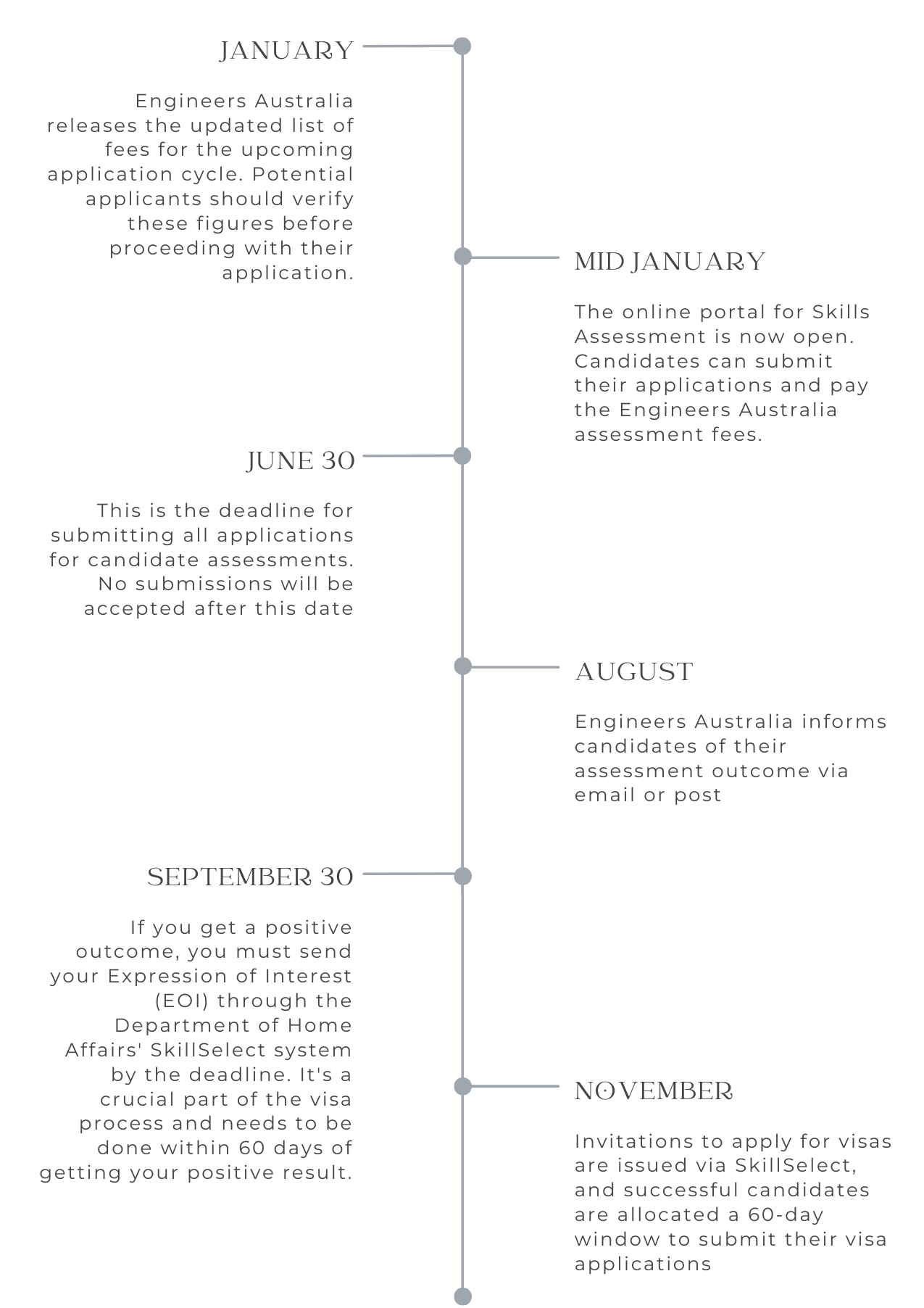
Criteria and Requirements for Each Category of EA Skills Assessment
Engineers Australia assesses engineers in different categories, each matching specific job roles. Here, we will explain the primary categories and the requirements for each category:
Professional Engineer
- Educational Qualification: You must hold a 4 year Bachelor’s degree in engineering
- Professional Experience: At least 5 years post-graduate professional engineering experience
- Competency Demonstration Report (CDR Report): A detailed report highlighting engineering skills and knowledge. This is for those without Engineers Australia accreditation.
Engineering Technologist
- Educational Qualification: A 3 Bachelor’s degree in engineering technology or related disciplines.
- Professional Experience: At least 4 years of relevant experience. Applying engineering principles and technology to practical projects.
- Competency Demonstration Report (CDR Report): A detailed report of your skills in technology application within engineering contexts.
Engineering Associate
- Educational Qualification: A 2-year diploma or associate degree in engineering or related field.
- Professional Experience: 3 years of practical experience supporting engineering projects. Showcasing a solid foundation in technical tasks is necessary.
- Competency Demonstration Report (CDR): A detailed report highlighting practical skills and understanding in executing and managing technical engineering operations.
Engineering Manager
- Educational Qualification: A master’s degree in engineering or equivalent. A bachelor’s degree in engineering.
- Professional Experience: At least 7 years of engineering experience. 3 years in a significant management role overseeing engineering projects and teams.
- Managerial Competency Report (MCR): Unlike the CDR for other categories, the Engineering Manager category requires an MCR. This report should cover three examples of managerial experience in engineering, highlighting leadership, project management, and strategic planning skills.
Applicants for the EA Skills Assessment must show English Language skills. through tests like IELTS or TOEFL. The following table indicates the minimal scores for each module:
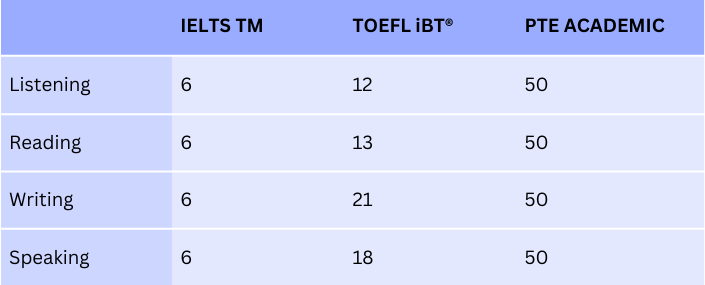
EA Skills Assessment Pathways
The pivotal factor in the selection of the appropriate pathway is qualification. That is,
- the country you received it
- the type of qualification
- whether it’s accredited.
Make sure your qualifications fit the category you’re applying to. This affects the outcome of your evaluation.
There are two pathways for engineering professionals: Accredited and Non-Accredited Qualification Pathways.
Accredited Qualifications Pathway
This is for those with engineering qualifications from institutions approved by Engineers Australia. They are considered to have passed the educational requirements. It simplifies the process, as these qualifications meet Engineers Australia’s high standards.
- Australian Accredited Engineering Qualification Pathway
This pathway is for graduates of accredited Australian engineering programs.
- Educational Qualification: Advanced diploma, Associate degree, or a bachelor’s, master’s, or doctoral degree in engineering from an Australian institution that Engineers Australia accredits. The specific degree requirements align with the category of engineering practice the applicant seeks assessment for.
- Professional Experience: While the primary focus is on the accredited educational qualifications, applicants are also required to demonstrate relevant professional engineering experience. The duration and nature of this experience depend on the engineering category under which they are applying.
By choosing this pathway, you benefit from a recognition of your educational qualifications, without the need for additional EA Skills Assessment
- International Accords and Qualifications
Understanding international engineering accords is essential if you’re seeking an Engineers Australia Skills Assessment. Agreements like the Washington, Sydney, and Dublin Accords recognize the equivalence of accredited engineering qualifications from participating countries. Applicants with qualifications from these signatory countries may benefit from a smoother EA Skills Assessment process, as their credentials meet Engineers Australia’s educational standards.
- Washington Accord: For professional engineers with degrees from institutions in countries like the United States, United Kingdom, Canada, and others who are signatories of this Accord.
- Sydney Accord: Targeted towards Engineering Technologists, it covers graduates with a 3 year engineering technology degree from accredited programs in signatory countries, including Australia, Canada, and South Africa.
- Dublin Accord: Pertains to Engineering Associates, recognizing 2-year diplomas or associate degrees in engineering from accredited programs in member countries, such as the United Kingdom, South Africa, and Australia.
Note: Your qualifications under these Accords will be recognized if:
- It was completed after, or in the same year in which the country was accepted as a full signatory under the Accord.
- Your program is within the time specified as accredited on the signatory’s website for your country. This may be referred to as a program’s intake, commencement or graduate year.
- Your program is listed as fully accredited, provisional accreditation isn’t sufficient.
Applicants with qualifications from these accords meet the standards expected by Engineers Australia.
Non-Accredited Qualifications Pathway
This is for engineering professionals whose qualifications Engineers Australia does not accredit. This route involves a more rigorous assessment process, including a full review of the applicant’s educational background, professional experience, and capabilities. It requires a Competency Demonstration Report (CDR) detailing the applicant’s engineering and management competencies.
Selecting the appropriate assessment pathway is crucial. It requires a thorough evaluation of your educational background and qualifications with the standards of Engineers Australia. You are advised to meticulously gather and prepare your documentation to ensure it meets the requirements and expectations of your chosen pathway. This preparatory step is pivotal in successfully navigating the assessment process and achieving a favourable outcome.
EA Skills Assessment Fees Structure for 2024
Fees for the 2024 EA Skills Assessment is outlined below. Candidates must factor in these costs in their preparation for submitting their Skills Assessment application.
Australian accredited engineering qualification assessment fees
| Current | Current | From 1 July | From 1 July | |
| Item/s | Fee excl. GST AUD | Fee incl. GST AUD | Fee excl. GST AUD | Fee incl. GST AUD |
| Australian Engineering Qualification Assessment | $285 | $313.50 | $295 | $324.50 |
| Australian engineering qualification assessment plus relevant skilled employment assessment | $675 | $742.50 | $695 | $764.50 |
| Australian engineering qualification assessment plus overseas engineering PhD assessment | $530 | $583 | $550 | $605 |
| Australian engineering qualification assessment plus relevant skilled employment assessment plus overseas engineering PhD assessment | $920 | $1012 | $945 | $1039.50 |
International Accords qualification assessment fees
| Current | Current | From 1 July | From 1 July | |
| Item/s | Fee excl. GST AUD | Fee incl. GST AUD | Fee excl. GST AUD | Fee incl. GST AUD |
| Washington/Sydney/Dublin Accord qualification assessment | $460 | $506 | $475 | $522.50 |
| Washington/Sydney/Dublin Accord qualification assessment plus relevant skilled employment assessment | $850 | $935 | $875 | $962.50 |
| Washington/Sydney/Dublin Accord qualification assessment plus overseas PhD assessment | $705 | $775 | $730 | $803 |
| Washington/Sydney/Dublin Accord qualification assessment plus relevant skilled employment assessment plus overseas engineering PhD assessment | $1095 | $1204.50 | $1125 | $1237.50 |
Competency demonstration report (CDR) assessment fees
| Current | Current | From 1 July | From 1 July | |
| Item/s | Fee excl. GST AUD | Fee incl. GST AUD | Fee excl. GST AUD | Fee incl. GST AUD |
| Standard competency demonstration report | $850 | $935 | $880 | $968 |
| Competency demonstration report plus relevant skilled employment assessment | $1240 | $1364 | $1280 | $1408 |
| Competency demonstration report plus overseas engineering PhD assessment | $1095 | $1204.50 | $1130 | $1243 |
| Competency demonstration report plus relevant skilled employment assessment plus overseas engineering PhD assessment | $1485 | $1633.50 | $1525 | $1677.50 |
Additional Services
Be prepared for potential extra costs that could arise during the application. Below is a detail of such costs. These expenses are important to account for in your budgeting and financial planning.
- Fast-track applications: This option carries a fee. Your application can be assigned to an assessor within 20 business days. This doesn’t mean you’ll receive an outcome in this timeframe. The time it takes to process your EA Skills Assessment depends on the quality of the documents you provide, and whether we need to ask you for more information. Before you start your fast-track application, read the detailed instructions on the Engineers Australia Skills Assessment page. The fast-track fee is non-refundable. Before you submit your application, ensure you have the correct assessment pathway and account ID.
- Overseas engineering PhD qualification assessment: We can assess your overseas engineering PhD to determine if it’s equal to an Australian engineering PhD for migration purposes. You don’t need this service if you completed your PhD in Australia.
- Relevant skilled employment: We can review documentary evidence of your employment. This option is available for all engineering occupation categories, except engineering manager, where it’s a mandatory part of the CDR assessment.
- Re-Assessment Fees: If an applicant wishes to contest the outcome of their initial assessment or seek re-evaluation under a different category, additional fees are applied for processing the re-assessment.
- Appeal Fees: In the case of an appeal against the decision made in the re-assessment, candidates are subject to an appeal fee set by Engineers Australia.
These supplementary costs can significantly impact the financial commitment required for the Engineers Australia Skills Assessment process. Candidates are advised to thoroughly research and prepare for these expenses to ensure a smooth and uninterrupted EA Skills Assessment experience.
| Current | Current | From 1 July | From 1 July | |
| Item/s | Fee excl. GST AUD | Fee incl. GST AUD | Fee excl. GST AUD | Fee incl. GST AUD |
| Fast-track assessment fee (additional to MSA assessment fee) | $325 | $357.50 | $335 | $368.50 |
| Separate relevant skilled employment assessment | $440 | $484 | $455 | $500.50 |
| Separate overseas engineering PhD assessment | $295 | $324.50 | $305 | $335.50 |
| Separate relevant skilled employment assessment plus overseas engineering PhD assessment | $680 | $748 | $705 | $775.50 |
| Review fee | $305 | $335.50 | $315 | $346.50 |
| Appeal fee | $580 | $638 | $600 | $660 |
| Updated outcome letter | $165 | $181.50 | $165 | $181.50 |
| Standard administration fee | $115 | $126.50 | $120 | $132 |
Changes in the 2024 Engineers Australia Skills Assessment Fees Structure
Notable changes include a moderate increase in application fees and assessment fees across all categories. This escalation is attributed primarily to two factors:
- Enhanced Assessment Procedures: Conducting more rigorous and comprehensive evaluation methodologies requires additional resources. These improved procedures ensure meticulous examination of qualifications and professional experiences, aligning with the global standards of engineering competency.
- Inflation and Operational Costs: The adjustment in EA Skills Assessment fees also reflects the broader economic factors, including inflation, which impact the operational costs associated with executing a detailed and extensive assessment process. This increment aids in maintaining the quality and integrity of the assessment, ensuring that it remains a robust and prestigious accreditation globally.
These modifications in the EA Skills Assessment fee structure are executed with a transparent approach to sustain and enhance the value offered to applicants.
Financial Planning for the EA Skills Assessment Process
Financial preparedness is important. The range of fees, both fixed and variable, requires careful financial planning and management. Below are strategic recommendations for effective financial planning:
Keep Updated on Fee Changes: Engineers Australia may revise fees periodically. Regularly checking their website will keep you informed of any changes, allowing you to adjust your budget accordingly.
Early Budgeting: Create a budget that covers all potential costs related to the Skills Assessment process. This includes the basic application fee, EA Skills Assessment fees, and any extra costs. Early planning gives you time to save or arrange for the necessary funds.
Research and Allocate for Supplementary Costs: Research the costs of document verification, professional evaluation, and translation services applicable to your case. Setting aside a contingency fund can help manage unexpected expenses without significant stress.
Consider the Fast Track Option Wisely: While the Fast Track Option ensures quicker processing, weigh its benefits against the financial implications. If your timeline allows, opting for the standard processing time could save you additional fees.
Explore Scholarships or Financial Help: Some organisations or professional societies offer financial assistance or scholarships to engineering professionals seeking accreditation. Investigate these opportunities as they could substantially reduce your financial burden.
Payment Methods and Policies
To ensure a streamlined payment process, the following methods are accepted:
- Credit and Debit Cards: This includes Visa, MasterCard, and American Express.
- Bank Transfer: Applicants can pay through direct bank transfers. Details about the beneficiary bank account, including SWIFT and BIC codes, can be found on Engineers Australia’s payment portal. Include the applicant’s name and assessment reference number in the transfer description to ensure the payment is correctly attributed.
- Online Payment Services: Payments can also be made through selected online payment services that offer additional layers of security and convenience. Information on supported services is available on our website.
Policies Surrounding Payments:
- Refund Policy: Assessment fees are generally non-refundable. Refunds are considered only under exceptional circumstances and are subject to the discretion of Engineers Australia. Situations that might be considered for a refund include overpayment or cancellation of an application before the assessment process has begun.
- Receipts and Confirmations: Upon successful payment, applicants will receive an electronic receipt as confirmation. This receipt should be kept for your records as proof of payment.
- Payment Deadlines: To avoid delays in the processing of your EA Skills Assessment, timely payment is crucial. Failure to comply with specified payment deadlines may delay or cancel your assessment.
- Currency and Conversion Fees: All fees are charged in Australian Dollars (AUD). Applicants paying from overseas should check currency conversion rates and any fees their bank or payment provider might charge.
Overview of Refund Policies
Below are the primary considerations and scenarios tied to refund eligibility:
- Overpayment or Duplicate Payment: If you pay the Skills Assessment fee more than once or pay too much, you might get a refund for the extra amount. You must provide evidence of the overpayment for the refund to be processed.
- Cancellation Before Assessment Commencement: If you decide to cancel your Skills Assessment application before the evaluation process, you may be eligible for a refund. However, this is subject to a processing fee, which will be deducted from the refund amount. Make sure you review the specific terms related to cancellations to fully understand the implications.
- Erroneous Payment due to Administrative Error: In the rare occurrence of an administrative error resulting in incorrect fee processing, Engineers Australia will rectify the situation by issuing a full refund of the erroneous payment.
If seeking a refund, submit a formal request, including all relevant documentation.
Tips for a Successful Skills Assessment
To enhance the likelihood of a successful outcome in the Skills Assessment process, applicants are advised to meticulously prepare their application. The following guidelines are designed to help candidates craft a comprehensive and compelling case for their professional credentials:
The following guideline helps you craft a compelling case for your professional credentials.
- Thoroughly Review Criteria and Requirements: Begin by examining the specific criteria and requirements outlined by Engineers Australia. Ensure you understand what is expected of you. This will guide you in assembling a complete and targeted application.
- Gather and Organize Documentation Early: This includes educational certificates, work experience letters, and professional development records. Verify they meet the stipulated standards for authentication and verification.
- Attention to Detail: Mistakes or inconsistencies in your application could slow down the process or affect the outcome. Double-check all dates, spellings, and details for accuracy. It is important to present a coherent and error-free application.
- Engage in Professional Development: Continuous professional development is highly valued. List relevant recent courses, workshops, or seminars. This shows your commitment to improving your skills.
- Avoid Common Pitfalls: Common pitfalls include incomplete applications, failure to provide sufficient evidence of work experience, and submitting documents that are not in English without the required translations. Ensure your application does not fall short due to these avoidable mistakes.
- Seek Clarification When in Doubt: + If you have any doubts about the application process or the validity of your documents, contact Engineers Australia for clarification. It is better to seek guidance than to submit an incorrect/incomplete application.
- Prepare a Detailed Competency Demonstration Report (CDR): For those required to submit a CDR Report, it is imperative to carefully follow the guidelines provided by Engineers Australia. The CDR is your opportunity to showcase how your engineering knowledge and skills apply to your chosen occupation. Include specific examples of projects you have worked on, highlighting your roles, responsibilities, and achievements.
Documentation and Evidence for Strengthening an Application
To strengthen your Skills Assessment application for Engineers Australia, include solid documentation that clearly proves your qualifications, experience, and skills. Here’s some advice to help you make a strong, convincing case for your application:
- Comprehensive Work Experience Documentation: Submit detailed employment references and letters that clearly state your job title, duration of employment, roles, responsibilities, and specific engineering tasks or projects you have undertaken. This documentation should ideally be on official company letterhead, signed by a superior or HR department, and include contact information for verification purposes.
- Authenticated Academic Credentials: Ensure that all academic qualifications, including degrees, diplomas, and certificates, are accompanied by official transcripts. If these documents are not originally in English, provide certified translations. Authentication of these documents by the issuing authority or a notary public adds to their credibility.
- Professional Development Evidence: Documentation of ongoing professional development through courses, seminars, workshops, or conferences attended not only demonstrates your commitment to staying updated with the field but also supplements your qualifications. Include certificates of completion or attendance records as part of your application.
- Project Reports and Presentations: If you are required to submit a Competency Demonstration Report (CDR) or if you wish to highlight specific project work relevant to your application, include detailed reports, presentations, and any publications you have authored. These documents should clearly communicate your involvement, the technical challenges faced, and the solutions you implemented or contributed to.
- Licenses and Certifications: Any relevant professional licenses or certifications you possess should be included, with attention to those recognized or valued in the engineering community. Such documents demonstrate a verified level of competency and adherence to industry standards.
- Recognition and Awards: Documentation of any awards or recognitions received for your work or contributions to the engineering field serves as a testament to your expertise and commitment. Include details about the awarding body and the criteria for the award.
By meticulously gathering and organizing the aforementioned documents and evidence, applicants significantly enhance their ability to present a comprehensive and persuasive application to Engineers Australia.
Conclusion
The path to recognition by Engineers Australia highlights your technical competencies and dedication to engineering excellence. The process is rigorous but designed to showcase your unique potential. Remember, each document and report you compile is a step closer to realizing your professional aspirations.
For engineers who do not possess accredited qualifications and cannot provide a Competency Demonstration Report, there is an option to undergo a Recognition of Prior Learning (RPL) assessment. This pathway is designed for individuals with substantial work experience in the engineering field but without formal qualifications. The RPL requires detailed reports on the applicant’s knowledge and skills gained through work experience, potentially coupled with informal or non-accredited learning programs.
Stay strong and committed to learning. The Engineers Australia skills assessment is your chance to showcase your expertise and experience. Approach each step with confidence and precision. Your efforts are worthwhile. We look forward to welcoming you to Australia’s engineering.
Frequently Asked Questions
How long does the EA Skills Assessment process take?

The processing time for an Engineers Australia Skills Assessment varies depending on the volume of applications and the completeness of the submitted application. On average, it can take between 4 to 7 months. Applicants are advised to submit their applications well in advance and ensure that all documentation is complete to avoid delays.
Can I apply for an Engineers Australia Skills Assessment if I have overseas engineering qualifications?
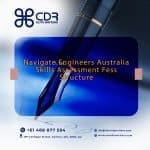
Yes, Engineers Australia welcomes applications from individuals with overseas engineering qualifications. However, applicants must ensure that their qualifications are equivalent to Australian standards and provide official translations of their documents if they are not in English.
Is the Competency Demonstration Report (CDR report) required for all applicants?
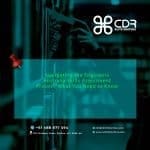
Not all applicants are required to submit a u003ca href=u0022https://cdrelitewriters.com/blog/ensuring-cdr-report-meets-msa-standards/u0022u003eCDR Reportu003c/au003e. This requirement primarily applies to applicants whose qualifications are not accredited by Engineers Australia or are from countries not covered by the Washington Accord, Sydney Accord, or Dublin Accord.
What should I do if my EA Skills Assessment application is rejected?
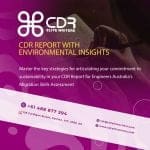
If your application is rejected, carefully review the feedback provided by Engineers Australia. You may have the opportunity to address the gaps or deficiencies identified and re-submit your application.
Are continuing professional development activities mandatory for the EA Skills Assessment?
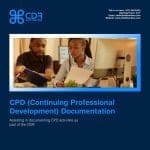
While not strictly mandatory, CPD activities are highly recommended and contribute positively to your Skills Assessment. These activities demonstrate your commitment to continuous learning and keeping up-to-date with the latest advancements in engineering.
How can I prove my English proficiency for the Engineers Australia Skills Assessment?

Applicants must meet the English language proficiency requirements set by Engineers Australia. This typically involves providing results from recognized English language tests such as IELTS, TOEFL iBT, or Pearson PTE.



